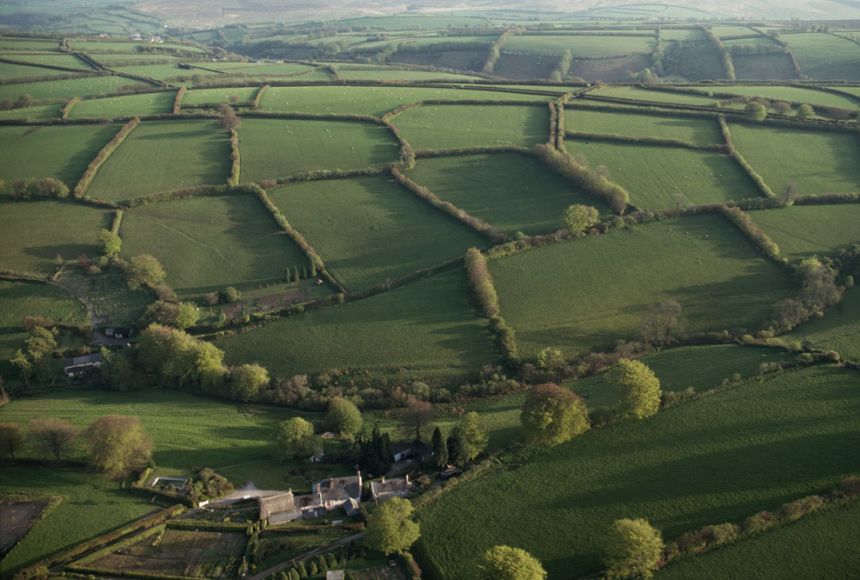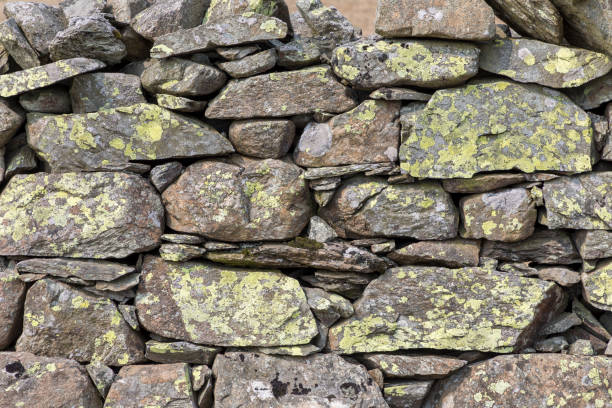
The popularity of these walls has increased over the years. Picket fences are not as popular as they once were.
What is it about these walls that are so attractive to gardeners.
- what are the benefits of a dry-stone walls/hedges?
- why are so many in walls in disrepair?
- where can you learn the skills to build your own?
When you look around the landscape of Britain you can see a vast difference between the north and south.
The south being more fertile for growing vegetation and livestock, the ground is relatively flat with a mild weather; where as in the north the rugged terrain and harsh climate is more ideal for livestock.
Having livestock, you will need a way to keep them in. In the south, Farmer will grow hedgerows as a means of securing the land. With the mild climate the plants can grow quicker than the animals can eat them.
Now in the north copious quantities of stone are easily found close to the ground surface, its here you will find evidence of dry stone walls. The walls are found where trees and hedges are difficult to grow.
On lower ground where hedges could be grown, they take longer to mature and can be stunted if exposure to animals to early, the saplings and new growth could be eaten quicker than the plant can grow, making this method of security difficult to establish.
Once a stone wall is erected, it will remain until neglected or dismantled. The walls would need little upkeep, if build properly.
The materials were easy to get, this is the reason stone and hedges were used. Yearly maintenance checks would ensure the longevity of the walls and hedges.
Fact – when farmers/labours where building their stone walls, they would put a trinket or coin in-between the gaps as a time capsule.
Fact- Prince Charles hosted a hedgelaying competition on Highgrove estates, this allowed different skills to be exercised. More.

The Change
As the 21st century got underway, changes to farming where steadily increasing but the dry-stone walls and hedges where still the best security for the fields. When the first world war erupted in October 1914 many young men left to fight, but it was when the war continued that cause a strain on the country.
Skilled workmen where unable to pass on their skills to their apprentices resulting in the loss of the majority of the knowledge, in this loss was the skills of dry-stone walling and hedgelaying. The little knowledge that survived the war the reminding walls and hedges were able to be maintained.
In time, the preferred fencing for farmers and gardeners were wooden stakes and wire netting. Resulting in the neglect of the remaining walls and hedges, they fell into disrepair. Many walls are left as wind breakers for livestock and wife life, over time new boundaries were created making the wall null for purpose. While many hedgerows where removal and replaced, others were left to grow wild.
Benefits of dry stone walls and hedges
The benefits of having hedgerows and stone walls are that they are environmentally friendly, with there material being natural and not man made.
The result of having these walls are that they make a great wind break which is beneficial for all animals, in many case’s they are used by a variety of wild life and plants as habitats.
When you think of the British countryside are your first thoughts could be the animal, the lush green grass then the hedges and stone walls; If so you are not alone.
Stone walls and hedges have a desirable effect wherever you chose to put them.
Training skills
Training in these heritage skills are hard to find, sympathetic works we are happy to help you gain theses skills.
Our aim is to save as much historic construction skills that is possible. So, we are happy to provide these skills to those who wish to learn. Check out our Course page to see what else we provide.
Acknowledgement
All information Provide has been collected by a member of Sympathetic Works Ltd, with help from Wikipedia search engine, The National Hedgelaying Society, BBC CountryFile and Dry Stone Walling Association of Great Britain. All pictures are the property of Sympathetic Works Ltd.
